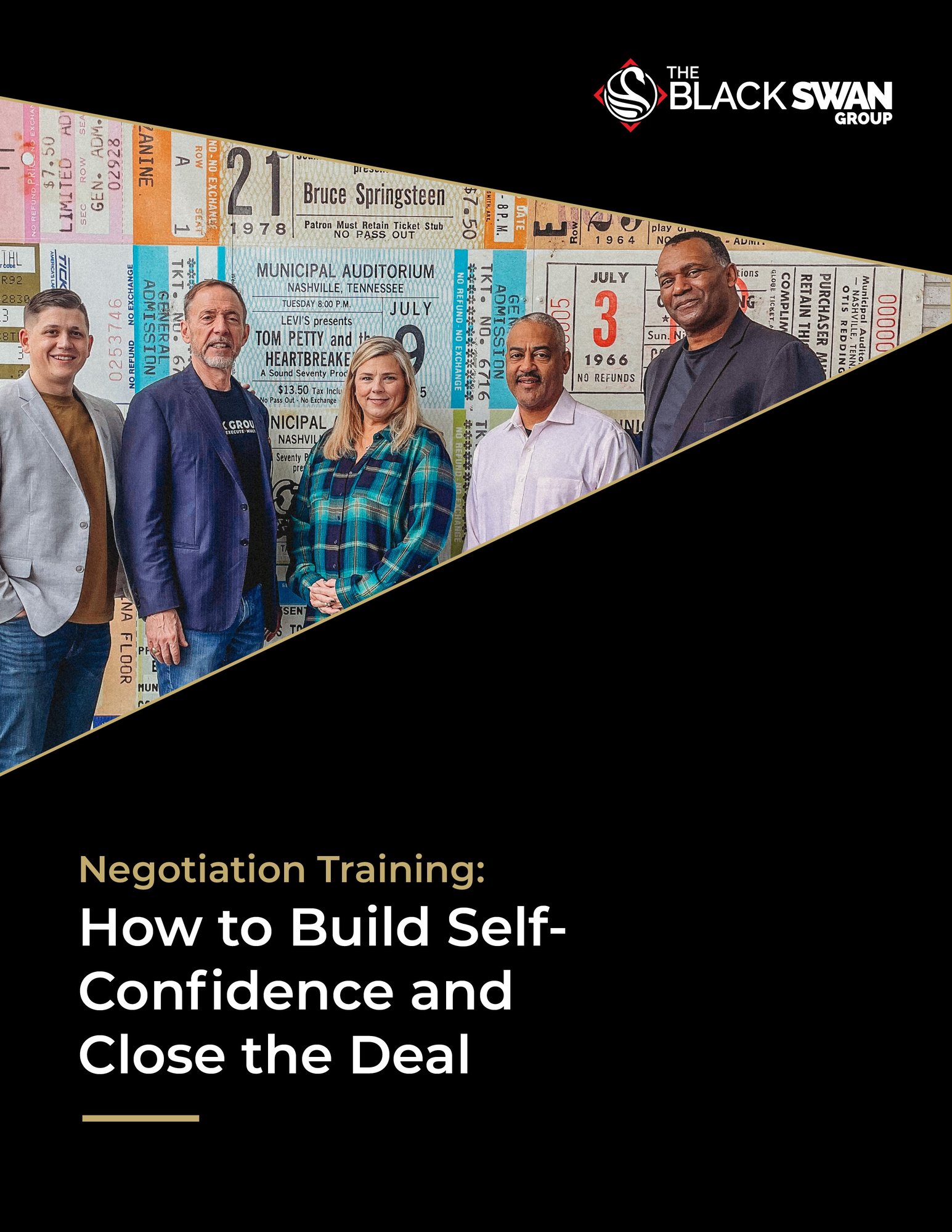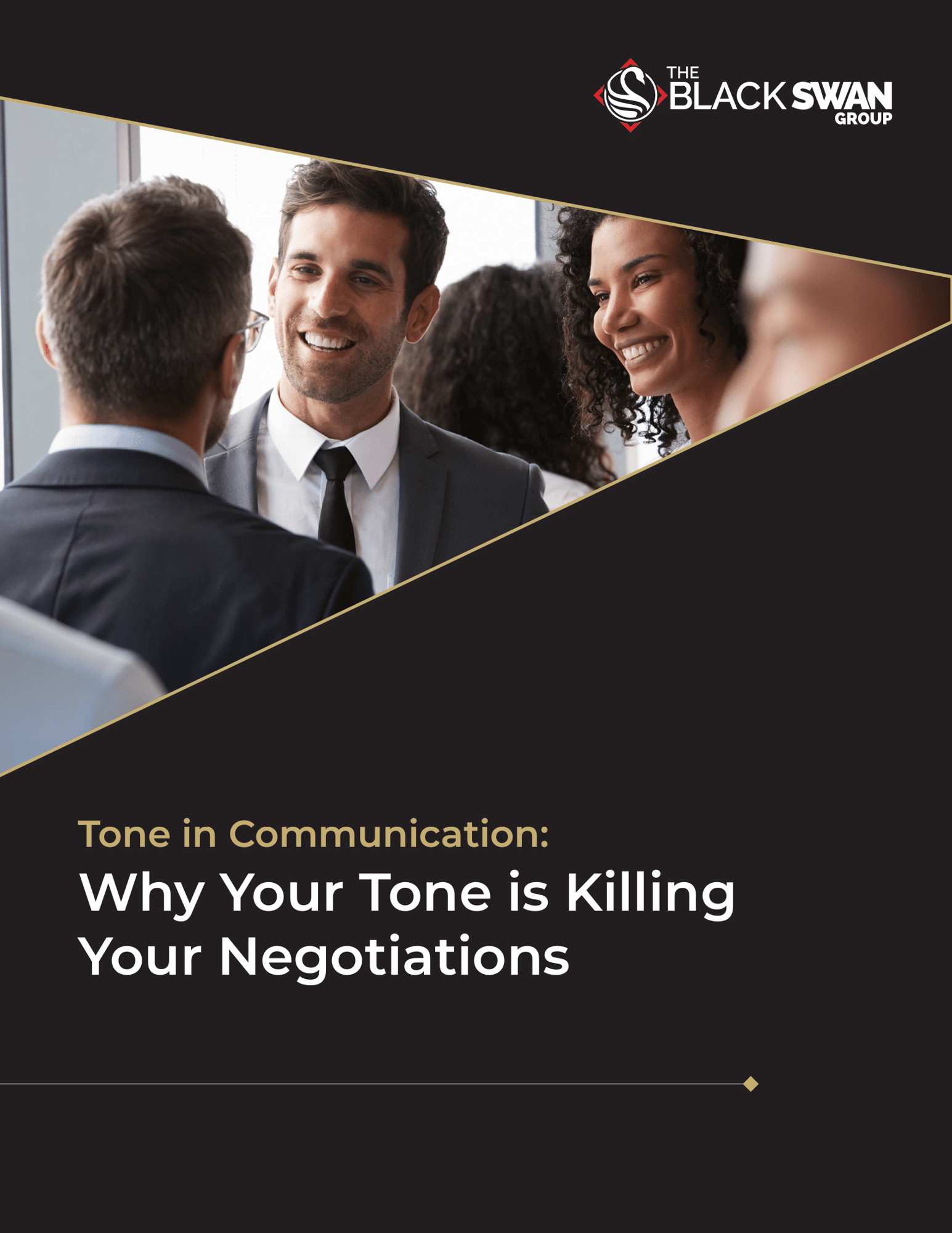Introduction
Imagine you’re in the middle of a negotiation. Your palms are sweaty, sweat is dripping down your forehead, you’re slouched over, and your voice is shaky. As you look across the table, your counterpart is sitting up straight with steepled fingers and is staring you straight in the eye, causing you to look away.
In this scenario, you’re nervous, and it’s painfully obvious.
In the world of high-stakes negotiations, appearance and perception are everything. Your composure and your body language matter. The more confident you are—and the more confident you appear—the easier it will be to get the business outcomes you’re aiming for.
Unfortunately, many of us struggle with confidence issues. In fact, one recent study found that 85 percent of people worldwide deal with low self-esteem.
If you aren’t as confident as you would like to be, you can take comfort in the fact that you’re not alone. But even so, that doesn’t mean you need to accept your fate as someone who lacks confidence.
Keep reading to learn about several tactics you can use to approach your next negotiation confidently and close more deals on your terms—not theirs.
Download a PDF version of the guide by filling out this form, or keep scrolling to read.

Chapter 1
Chapter 2
Chapter 3
Chapter 4
Chapter 5

How to Develop Confidence in Negotiation
If you want to approach a negotiation with confidence, you need to put in the work ahead of time. The more you prepare up front, the easier it will be to act confident once you’re sitting at the table.
Of course, you’ll also have to retain that confidence mid-flight. And once the engagement is over, you’ll need to assess what happened to figure out what you can improve for next time.
In this section, we’ll examine tactics you can use to be confident before, during, and after your next negotiation.

Preparing for the Negotiation
To be confident in your next negotiation, you need to spend time preparing. Here are some tricks you can use to ensure you exude confidence the next time you sit down at the table.
1. Learn the skills.
First things first: The better you understand The Black Swan Group’s skills, the easier it will be to feel confident when the time comes. Although you might not be able to master all the skills at once, you should explore certain skills that tend to work for everyone.
For example, the Quick 2+1™ is a simple exercise that involves Labels™, Mirrors™, and Dynamic Silence™. At a high level, the Quick 2+1 is foundational to what The Black Swan Group teaches. It’s an easy way to demonstrate that you understand what your counterpart is going through, making it much easier to develop trust-based influence.
In addition to these skills, you should try to master No-Oriented Questions™ because people feel protected when they can say no to something. On top of this, you can ace your next negotiation by becoming an expert in using an Accusation Audit™ to mitigate the negatives likely harbored by your counterpart.
The more comfortable you are with these skills, the more confident you will be at the table. It’s that simple.
2. Eat your CAVIAAR™.
If you want to be confident during your next negotiation, you need to prepare your mindset and get ready for what you’re about to experience. One easy way to do this is by embracing the tenets of CAVIAAR™. This means staying curious, accepting the fact you’re going to be attacked during the negotiation, and venting to a peer beforehand to clear your mind. Doing so will help you feel more confident heading into the negotiation because your insecurities won’t be top of mind.
Are you looking to jumpstart your negotiation training? Enroll in our “High-Performing Negotiator Mindset” course today!
3. Remember that vision drives decision.
One of The Black Swan Group’s Laws of Negotiation Gravity™ is this: Vision drives decision. The more time you spend preparing before the negotiation, the easier it will be to stay confident throughout it.
Before heading into a negotiation, spend some time with “The Negotiation One Sheet” and outline your goals and the tactics you will use to get there. When you have a goal in mind and are otherwise committed to being flexible, it’s much easier to end up where you want to be.
4. Listen at a higher level.
Most people are not good listeners. In fact, they’re downright incapable of listening at the highest levels! Unfortunately, you can’t use our skills if you’re not listening to what the other side is saying—including the words and emotions you try to bring to the surface with Labels.
To be confident in your next negotiation, you need to practice active listening and listen at the highest levels. Instead of listening to get the gist of what the other side is saying and then tuning them out, or listening until you feel you have their problem solved, active listening teaches you to listen to truly understand (i.e., listening with Tactical Empathy™).
5. Get excited, not anxious.
In 2014, Alison Wood Brooks and Harvard Business School published a study that revealed that saying things like “I am excited” out loud can assuage anxiety.
By telling yourself you’re excited and not nervous before entering a negotiation, you’ll feel excited because your energy will refocus in a more positive direction. This will improve your performance because your brain will be in a happy state versus a nervous one.
6. Release positive endorphins.
Think back to the last time you saw an NFL game. Before the kickoff, you likely saw athletes running in place, jumping up and down, and bumping into their teammates. These players were pumping themselves up to release positive endorphins, putting them in a much better state of mind before the game.
The same idea applies to the world of high-stakes negotiation. Before sitting down at the table, you may want to try doing stretches and deep breathing exercises to release endorphins.
Believe it or not, research suggests that we function 31 percent more effectively when we are in a positive state of mind. By pumping yourself up before a negotiation, you’ll be more effective and, in turn, your counterpart will be more receptive.
7. Smile!
Just like you should try to get excited, you should also force yourself to smile. Studies show that forcing a smile will improve your mood by tricking your brain into thinking you’re legitimately happy.
In addition to putting you in a better mood, smiling makes your voice sound friendlier and more accommodating. Leading up to the negotiation, force a smile on your face, and great things can happen.

Navigating the Negotiation
You’ve done your prep work, and now you’re finally at the table. Use these tips to navigate the negotiation with confidence and get the deal done.
8. Use skills without fear.
The first Law of Negotiation Gravity is that the urge to correct is irresistible. In other words, when you say something to the other side and it’s wrong, you’re in great shape because your counterpart will make sure you’re aware as soon as possible.
In the middle of a negotiation, lean into the skills as much as possible. Ultimately, it doesn’t matter what you end up saying. If you Label something incorrectly, the other side will let you know. Just chalk it up to a misstep that helps you gather more information.
Whatever you do, don’t be defensive. This is all an information-gathering exercise, so as long as you lean heavily on the skills, there aren’t any right or wrong moves.
9. Use Labels on yourself.
If you feel you’re becoming negative or overly emotional during a negotiation, it might be time to use skills on yourself. For example, you might want to use a Label in your internal monologue: It seems as though I’m overreacting to my counterpart’s statement.
In The Upward Spiral, author Alex Korb explains how it’s possible to mitigate negative thoughts by changing the way we think about them. Using Labels to defuse negative sentiments before they manifest in the conversation can be a great way to stay confident and lead the negotiation to the preferred outcome.

Analyzing the Negotiation
The negotiation might be over, but that doesn’t mean your work is done. Once a negotiation is in the rear-view mirror, it’s time to conduct a post-mortem to see what went well—and what you can improve upon for next time.
10. Sit down and debrief.
At the end of every negotiation, it’s important to sit down with colleagues—ideally those who were in the negotiation with you—and analyze what happened. Try to identify areas where your skills helped you accomplish your objectives and the places you stumbled, perhaps due to a lack of confidence.
By studying your miscues and making sure they don’t happen again, you can increase your confidence and achieve better outcomes.

Ready to improve your self-confidence? Enroll in Black Swan Group training today!
Nobody rises to the occasion. We all fall to our highest level of preparation. That being the case, you must put in as much work as possible before sitting down at the table.
If you haven’t done so already, start by reading the book on negotiation: Never Split the Difference. While you’re at it, subscribe to our YouTube channel and browse our robust library of negotiation tips and tricks.
When you’re ready to take your learning to the next level, enroll in The Black Swan Group training sessions and figure out everything you need to do to close more deals with less effort.
Here’s to making it rain!
Download a PDF version of the guide by filling out this form:


-1.jpeg?height=2000&name=Infographic%20The%20Black%20Swan%20Groups%20Negotiation%209%E2%84%A2%EF%B8%8F%EF%B8%8F%EF%B8%8F%20(N9%E2%84%A2%EF%B8%8F%EF%B8%8F%EF%B8%8F)-1.jpeg)